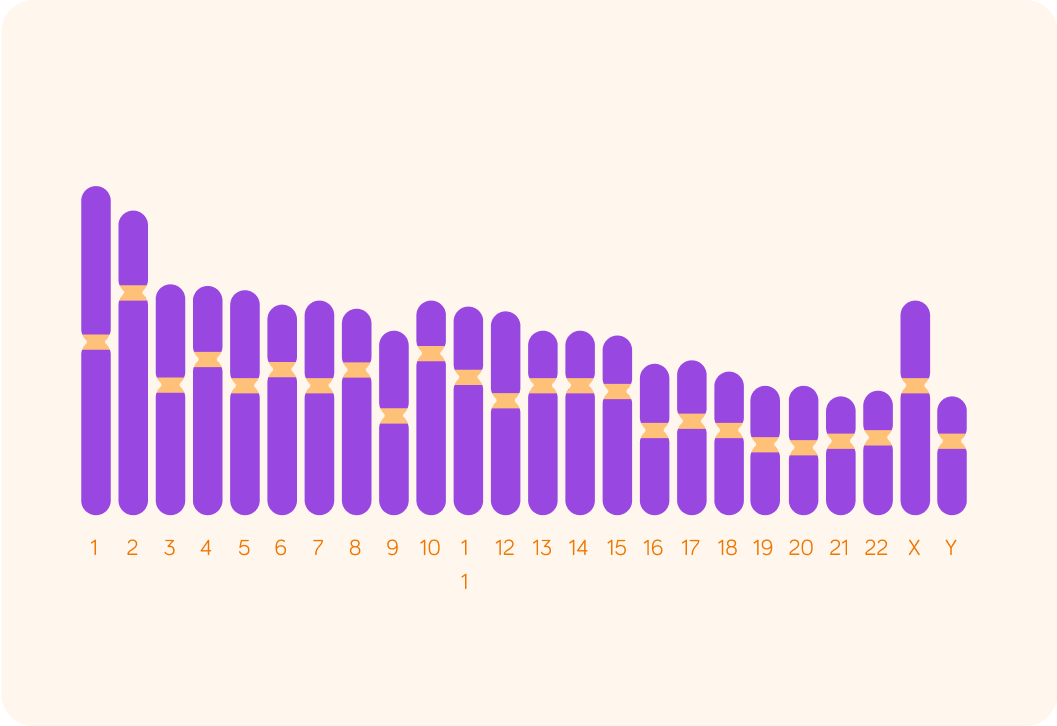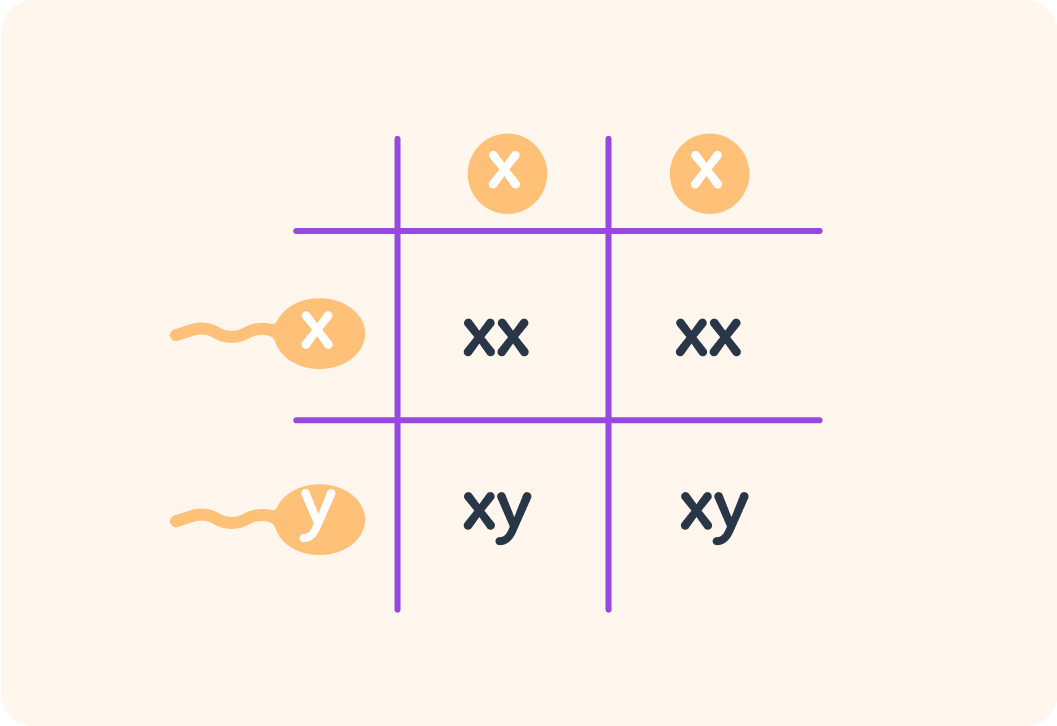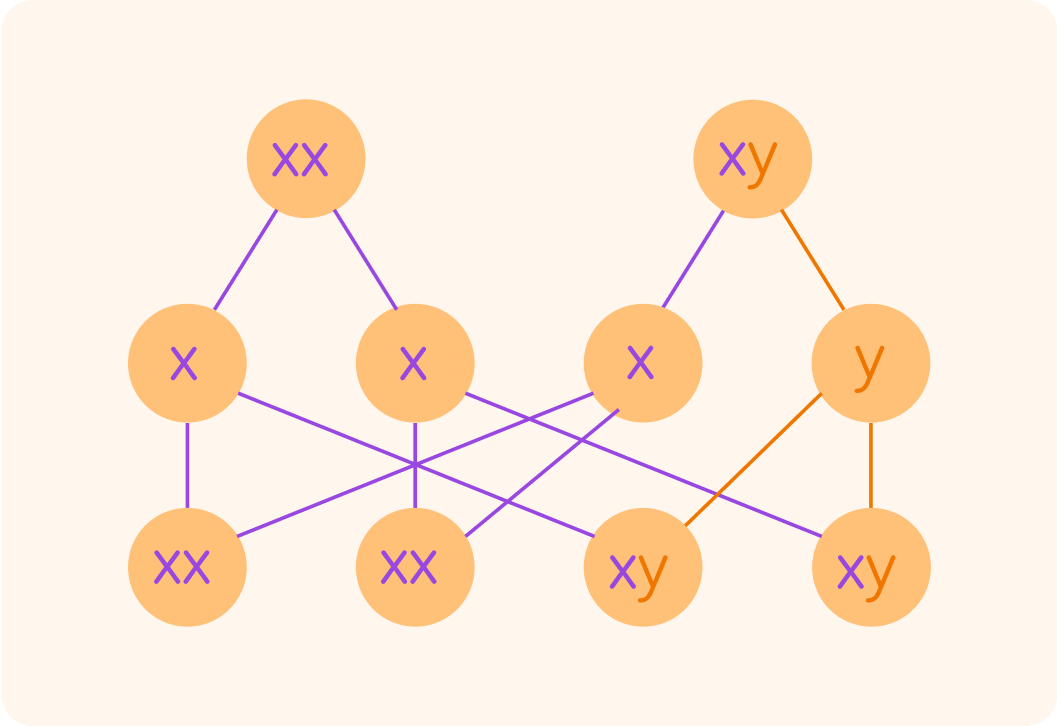YOU ARE LEARNING:
Sex Determination

Sex Determination
The sex, or gender, of an offspring is determined at fertilisation. Males have the chromosomes XY while females have XX chromosomes. We can use genetic diagrams to understand sex inheritance.
The sex of an offspring is decided at fertilisation, when sperm and egg meet. Each gamete brings with it one sex chromosome, either an X or a Y, to produce offspring. These sex chromosomes join together to make a pair.
Apart from the sex chromosome pair, how many pairs of chromosomes do humans have?

What do you think the sex chromosome pairs are for females and males?

Each gender's gametes donates one sex chromosome to the offspring. If females have the sex chromosomes XX and males have the chromosomes XY, what do you think determines the sex of the offspring?

Why do you think males have an X chromosome, if it is the Y that determines their gender?

Here is an image of a set of chromosomes, called a karyotype. Look at the final set to the far right. This is a...
A) male B) female


To determine the possibility of having a particular gendered offspring, we can use genetic diagrams.
Before we start, what probability do you think it is that a baby will be boy or girl? Give your answer in percent.

This genetic diagram, called a Punnett square, shows the possible combination of gametes from a male and a female. Where are the female gametes?
A) In the top row. B) In the first column from the left.


Where are the male gametes?
A) In the top row. B) In the first column from the left.


We have already established a 50% probability of having a boy or a girl.
The male could provide one X chromosome to match with a female's X, to make a female offspring (XX). This could happen twice.

Or the male could provide one Y chromosome to match with a female's X, to produce a male offspring (XY).
This could also happen twice.

What is the probability of having a boy in direct proportion?

Another way to visualise this same information is through family pedigrees, also called family trees.
Here we can see the same information about baby gender possibilities.

The top two circles are the parents, with the XX chromosomes for the female, and XY for the male. What do you think the second line of circles are?
A) Eggs B) Gametes C) Chromosomes


What is the ratio of girls to boys in a genetic cross, in it's simplest form?

Which of these statements are correct? Pick all the options you think are correct.

You can select multiple answers
If homologous chromosomes can be described as having the same structure and sequence of genes as each other, which of these definitions are correct?

